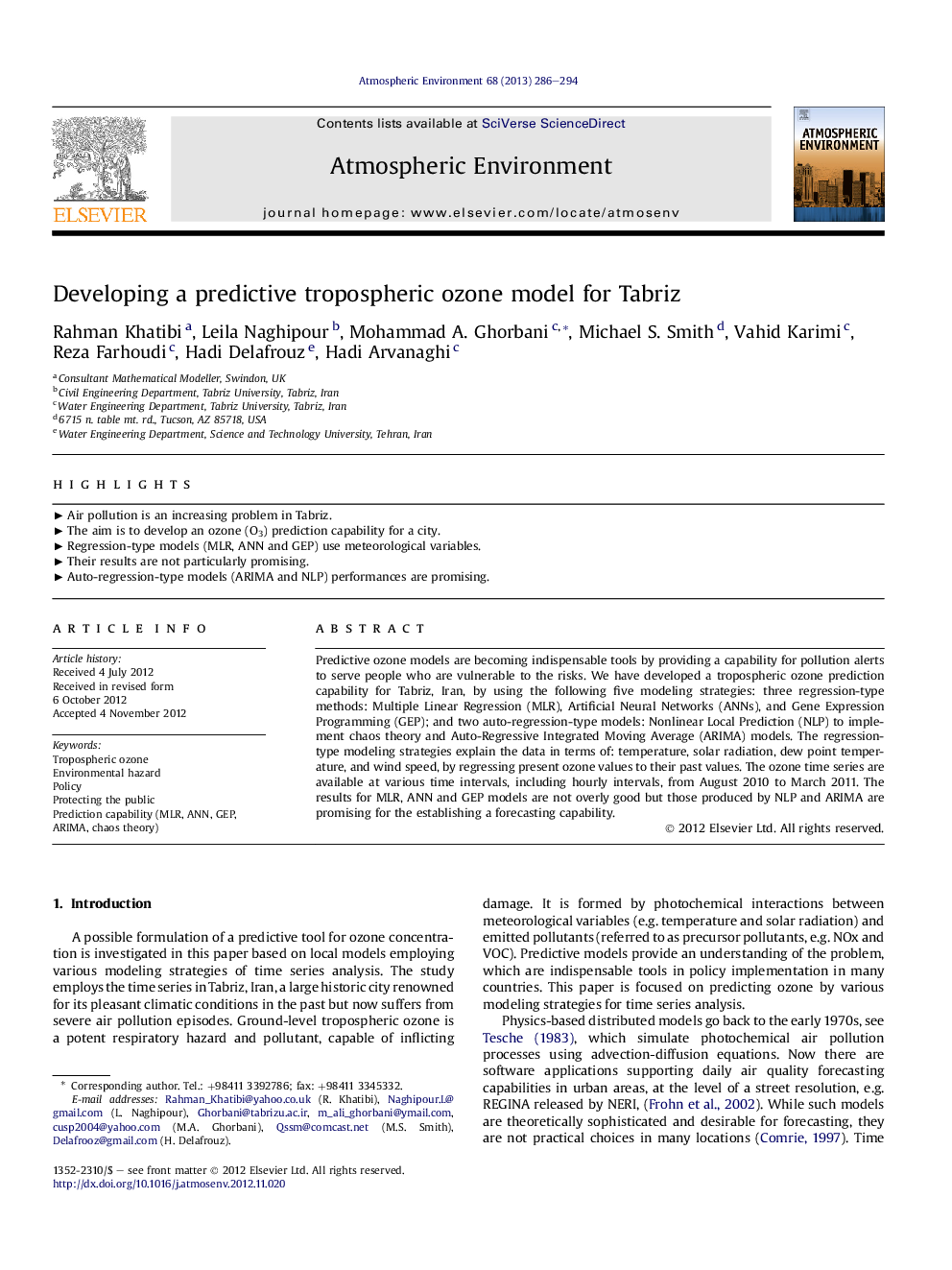| Article ID | Journal | Published Year | Pages | File Type |
|---|---|---|---|---|
| 4438450 | Atmospheric Environment | 2013 | 9 Pages |
Predictive ozone models are becoming indispensable tools by providing a capability for pollution alerts to serve people who are vulnerable to the risks. We have developed a tropospheric ozone prediction capability for Tabriz, Iran, by using the following five modeling strategies: three regression-type methods: Multiple Linear Regression (MLR), Artificial Neural Networks (ANNs), and Gene Expression Programming (GEP); and two auto-regression-type models: Nonlinear Local Prediction (NLP) to implement chaos theory and Auto-Regressive Integrated Moving Average (ARIMA) models. The regression-type modeling strategies explain the data in terms of: temperature, solar radiation, dew point temperature, and wind speed, by regressing present ozone values to their past values. The ozone time series are available at various time intervals, including hourly intervals, from August 2010 to March 2011. The results for MLR, ANN and GEP models are not overly good but those produced by NLP and ARIMA are promising for the establishing a forecasting capability.
► Air pollution is an increasing problem in Tabriz. ► The aim is to develop an ozone (O3) prediction capability for a city. ► Regression-type models (MLR, ANN and GEP) use meteorological variables. ► Their results are not particularly promising. ► Auto-regression-type models (ARIMA and NLP) performances are promising.
